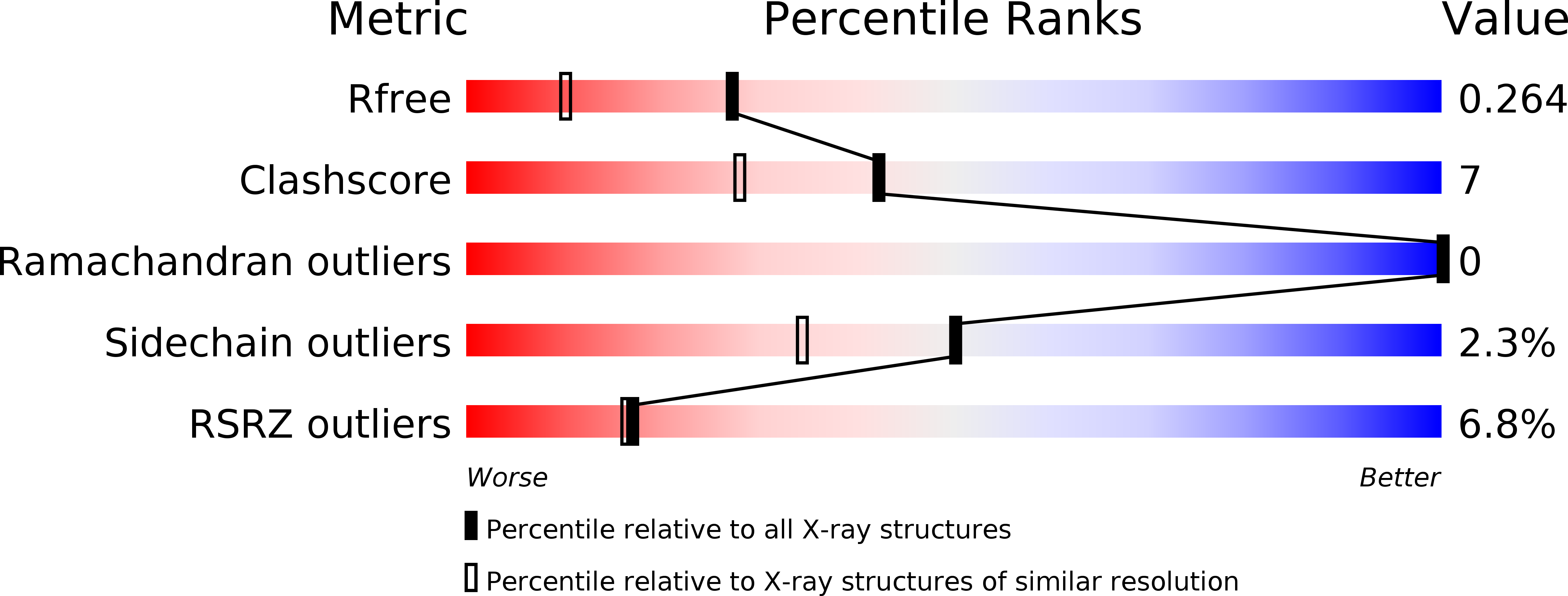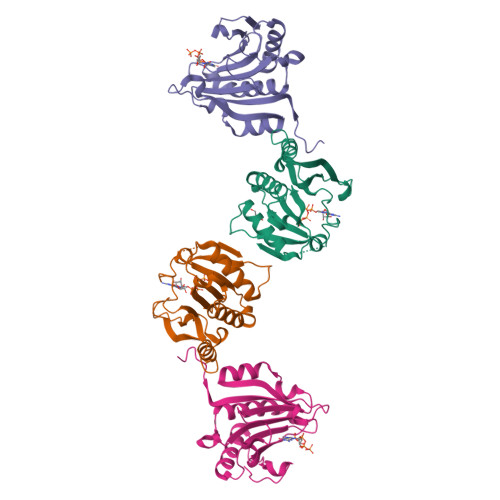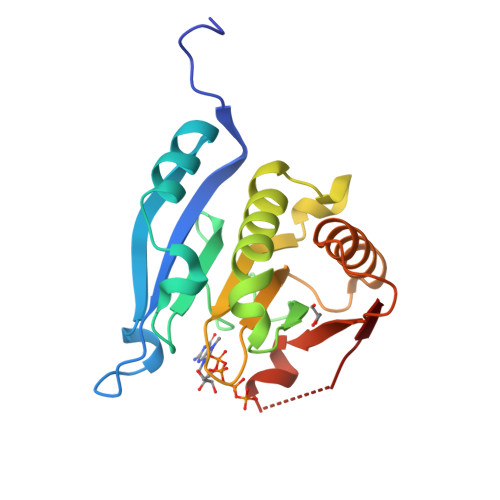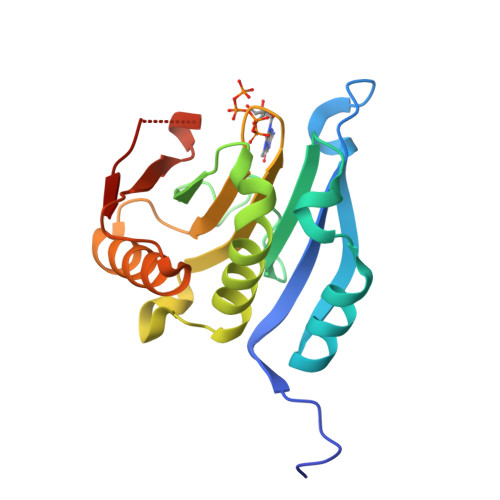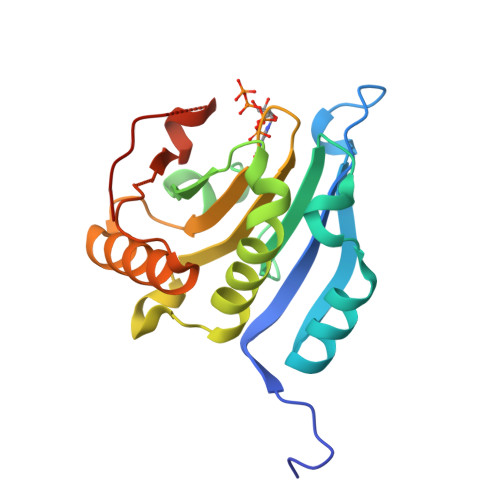mRNA cap analogues substituted in the tetraphosphate chain with CX2: identification of O-to-CCl2 as the first bridging modification that confers resistance to decapping without impairing translation.
Rydzik, A.M., Warminski, M., Sikorski, P.J., Baranowski, M.R., Walczak, S., Kowalska, J., Zuberek, J., Lukaszewicz, M., Nowak, E., W Claridge, T.D., Darzynkiewicz, E., Nowotny, M., Jemielity, J.(2017) Nucleic Acids Res 45: 8661-8675
- PubMed: 28666355
- DOI: https://doi.org/10.1093/nar/gkx569
- Primary Citation of Related Structures:
5J5O, 5J5Y - PubMed Abstract:
Analogues of the mRNA 5'-cap are useful tools for studying mRNA translation and degradation, with emerging potential applications in novel therapeutic interventions including gene therapy. We report the synthesis of novel mono- and dinucleotide cap analogues containing dihalogenmethylenebisphosphonate moiety (i.e. one of the bridging O atom substituted with CCl2 or CF2) and their properties in the context of cellular translational and decapping machineries, compared to phosphate-unmodified and previously reported CH2-substituted caps. The analogues were bound tightly to eukaryotic translation initiation factor 4E (eIF4E), with CCl2-substituted analogues having the highest affinity. When incorporated into mRNA, the CCl2-substituted dinucleotide most efficiently promoted cap-dependent translation. Moreover, the CCl2-analogues were potent inhibitors of translation in rabbit reticulocyte lysate. The crystal structure of eIF4E in complex with the CCl2-analogue revealed a significantly different ligand conformation compared to that of the unmodified cap analogue, which likely contributes to the improved binding. Both CCl2- and CF2- analogues showed lower susceptibility to hydrolysis by the decapping scavenger enzyme (DcpS) and, when incorporated into RNA, conferred stability against major cellular decapping enzyme (Dcp2) to transcripts. Furthermore, the use of difluoromethylene cap analogues was exemplified by the development of 19F NMR assays for DcpS activity and eIF4E binding.
Organizational Affiliation:
Division of Biophysics, Institute of Experimental Physics, Faculty of Physics, University of Warsaw, Zwirki i Wigury 93, 02-089 Warsaw, Poland.







